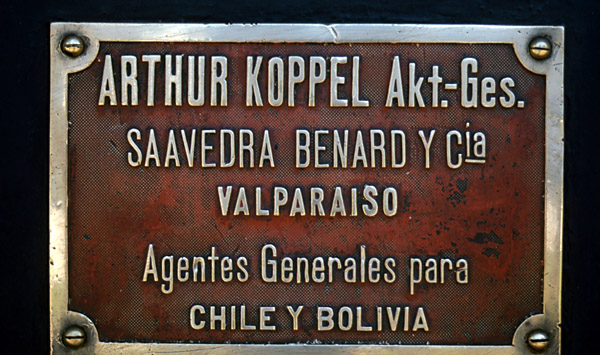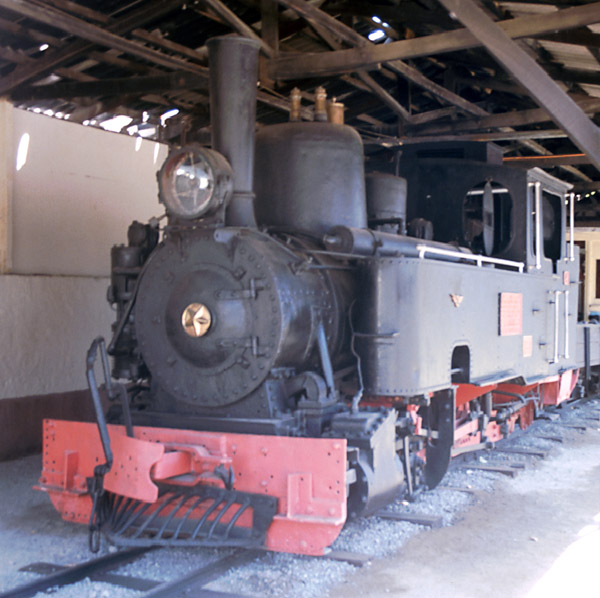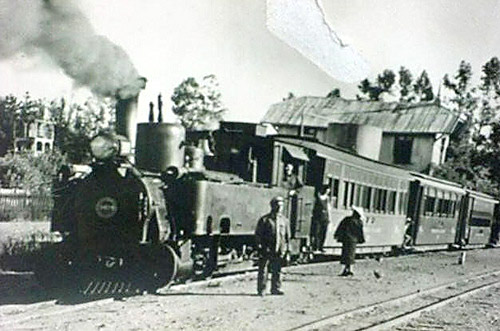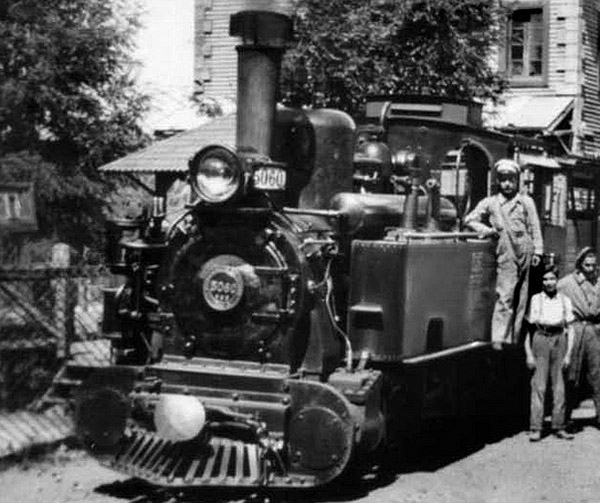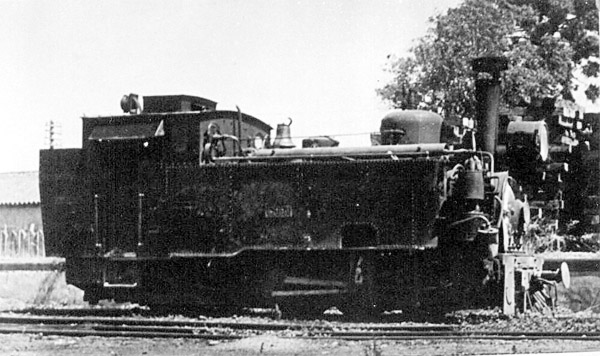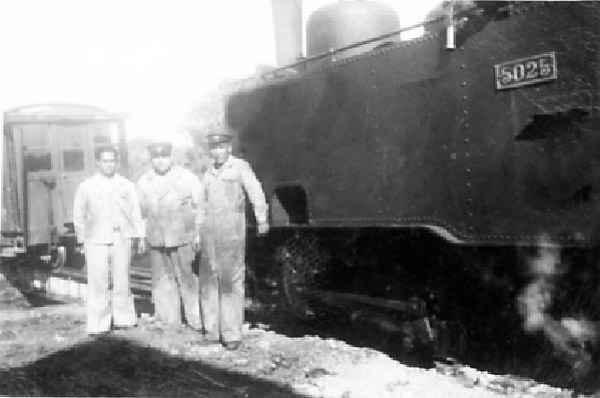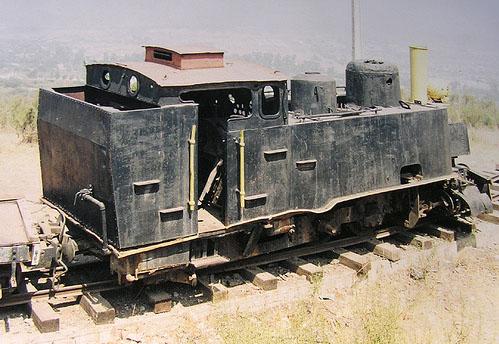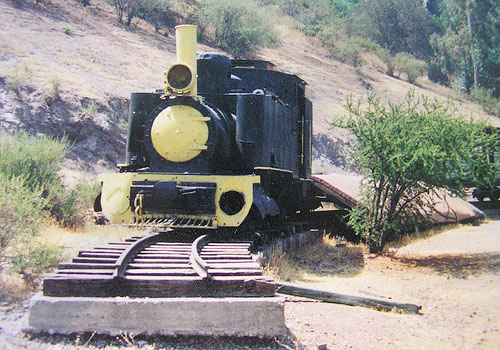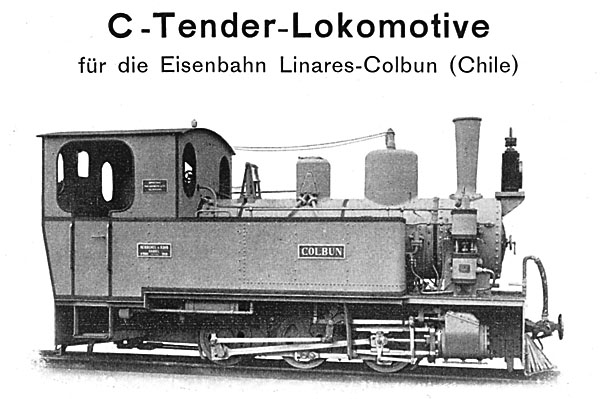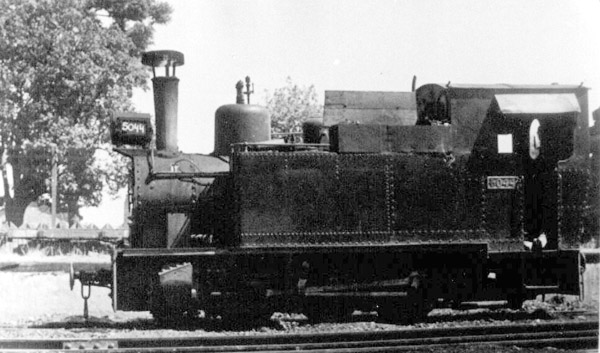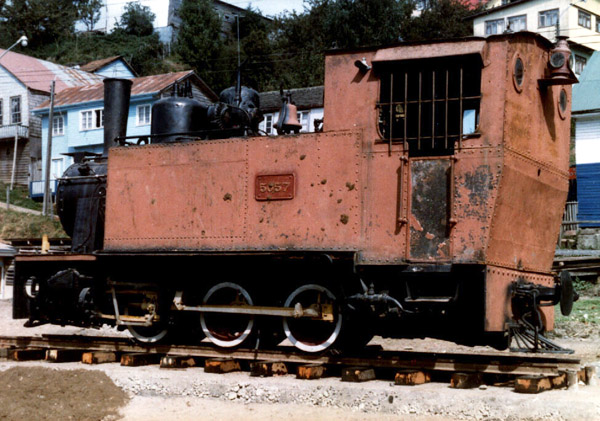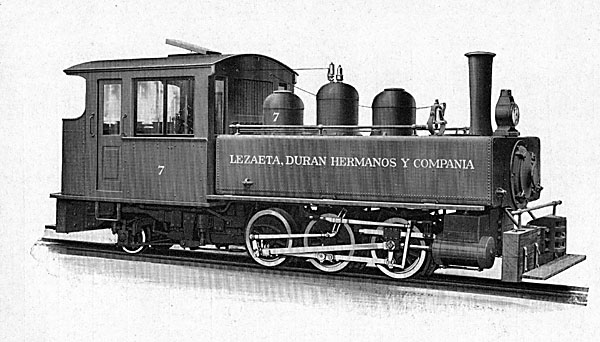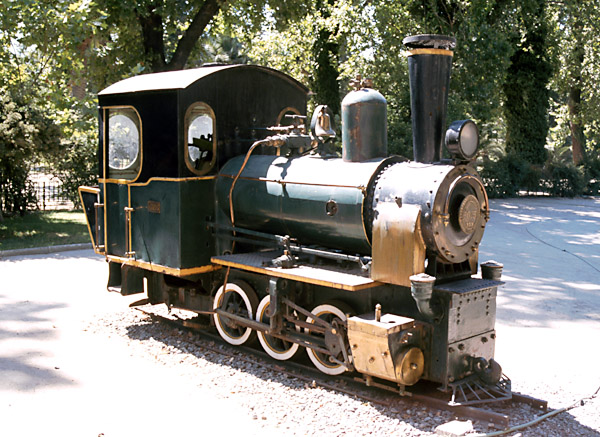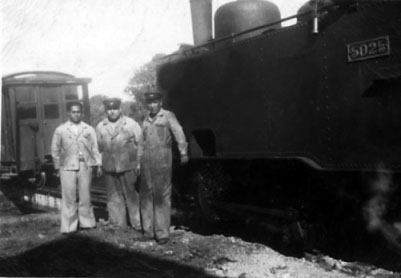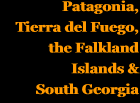 |
 |
 |
|||||||||||||||||
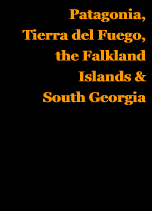 |
|||||||||||||||||||
 |
|||||||||||||||||||
Locomotives and rolling stock A considerable puzzle The analysis of the available data takes a considerable amount of space and the full text with tables has therefore been placed in an appendix page. The current page includes all relevant photos and a précis of some of the discussion. Steam locos on Chiloé
The agents' plate carried by one of the batch of Jung 0-6-2Ts which eventually became the FCE's class 'a'. This particular loco was allocated to the construction of the Puente Alto to Volcan line near Santiago, which meant that it survived long enough to be preserved. A little more information can be gleaned from the Orenstein & Koppel locomotive builders' list (3). Three locos appear to have been delivered to the Ancud - Castro line via the agents Saavedra Benard y Cia. in Valparaiso. In 1910 a 40hp 0-6-0T no. 3992 presumably for construction trains; in 1912 a much bigger 90hp 0-6-0T no. 5815; and finally in 1914 a 125hp loco no. 7120. There may have been others. A look at the list of locos built by Jung during 1912 shows a total of seven 0-6-0Ts and four 0-4-0Ts produced for 60cm gauge lines of the Chilean State Railways. The 0-6-0Ts were builders' nos. 1852-8 and the 0-4-0Ts were nos. 1859-62. Narrow gauge locomotive classes Renumbering Class 'a' 0-6-2Ts Detailled original dimensions included a total weight of 22.8 tonnes; driving wheels of 700mm diameter; a coal capacity of 1006 kgs; and an overall length of 8.9 m. An FCE data sheet from 1939 shown in Carlos Mendez Notari's booklet (6) lists six of these engines (Nos. 5025, 38, 39, 58, 59 and 60), though again it is not clear which locos were on which line.. The grouping of these locos into a single class 'a', hides the fact that there seem to have been two or possibly three clear variants right from the start. Two photos elsewhere in this chapter show a loco of the Chiloe railway on its side after an accident. A loco of this precise pattern survives in Chile on the erstwhile FC Militar del Cajón del Maipo, better known as the FC Puente Alto-Volcan on the outskirts of Santiago.
The photo above shows the Puente Alto-Volcan loco, familarly known as 'Panchita', as it was displayed in the barracks at Puente Alto for many years. More recently it has been moved to Melocotón nearby. This batch of locos seem to have been ordered by the DOP during the narrow-gauge construction frenzy of the first decade of the 20th century. Whilst the others were transferred to the FCE, this particular loco was handed over to the army when they took on the running of the Puente Alto to Volcan line. Whilst it bears a Koppel agency plate (see photo at head of page) Martin Murray's preserved Orenstein & Koppel loco list (7) confirms that it is an Arnold Jung product, no. 1306 of 1909. Whilst it was originally thought that differences in detail visible in many photos of locos on the Chiloe railway were the result of later modifications, I am increasingly coming to the conclusion that the majority of the 'a' class locos were delivered looking very different from those just described. The majority of photos illustrating 'a' class locos show flat fronted and rather higher side tanks, larger smokebox doors, a different shape of smokebox side, and double coal rails above the tanks. The characteristic cut out and S-curve in the foot of the tank distinguish all of these locos from the class 'b' with its angular step in the running plate height at the front of the cab. An extra variation made obvious in the FCE diagram book was that locos 5058-5060, apparently built by Jung, had a longer wheelbase than the other class 'a' engines. It may be that those supplied by Jung differed from those built earlier by Orenstein and Koppel despite nominally being members of the same class. Furthermore, later modifications by the FCE workshops seem to have increased the size of tanks and bunkers so the extent that the locos latterly looked very different .
Above is one of the earlier locos with the rounded front to the tanks, whilst below is loco 5060 from the Jung 1929 built batch. The square fronted tanks are clearly visible in this shot at Recinto variously described as from 1937 or 1940.
The third major variant is probably the result of a number of modifications through the locos' working lives. The tanks and bunker have gradually increased in size, but the tank cutout over the valve gear and the curved step in the running board line remain. Class 'a' loco no. 5039. The origin and date of this photo are unknown, but thanks are due to Señor Raúl Moroni who scanned it and sent it. If on Chiloé the photo was probably taken at Ancud or Castro. More interesting are the high side tanks and the big rear bunker, which may have been later modifications.
One of the last members of the class to have been in operation seems to have survived, and we await confirmation that it is being cosmetically restored for display in the centre of the town of Capitan Pastene northwest of Temuco. It may well be loco no. 5025, though its smokebox number-plate has got transferred to another smaller 60cm gauge loco now in the Quinta Normal railway museum in Santiago. This has led to much confusion. This photo shows type 'a' 0-6-2T no. 5025, probably at Castro depot. There is a turntable in the background.
The following two pictures were taken in 2006 and are displayed on a Flickr page linked from the Capitan Pastene town website. They show an even more highly modified - and rather battered - class 'a' loco. In particular note the enlarged welded tanks and bunker, and the consequent need for modifications to the cab. .
Class 'b' 0-6-0Ts A photo from the Henschel catalogue for 1910, showing one of the three locos bearing a name but no running number as was the DOP's custom (17). Strangely the table of details states inaccurately that these locos were for 762mm gauge, though the branch was 600mm.
Below is Class 'b' 0-6-0T no. 5044 of the same general pattern but with higher side tanks. It looks as though it has led a somewhat hard life, with the water tank in particular have been patched all along the bottom seam. The photo was provided by Señor Raúl Moroni but the date and location are unknown.
One of these locos, sometimes described as a Henschel, is preserved down on the waterfront in Castro, with the FCE number 5057. This loco was at one time plinthed at the San Bernardo workshops in Santiago. It has been suggested that this is in fact one of the Arnold Jung engines, no. 1857 of 1912. One source (4) states that this locomotive was transferred after closure to the Saboya - Capitan Pastene line on the mainland, running there until its closure in 1970. 5057, pictured in 1993 on the old alignment in Castro, has some detail differences from 5044 above. Apart from the loss of fittings such as headlight, extra bunker boards, and spark arrestor, 5057 seems to have gained a larger sand-dome, though this is not clearly visible in the photo below.
Class 'c' 0-4-0Ts Class 'd' Davenport 0-6-2Ts originally ordered by the contractors This picture is taken from a Davenport catalogue of about 1923, kindly forwarded by Vance Bass. It will be noted that the loco bears the running number '7', implying that the owners had other earlier locos.
Classes 'f', 'g' and 'h' Smoschewer loco
At the time of the official last train on 3 March 1959, loco 5060 was used to haul the train. 5039 was to be used for dismantling. However the line staggered on and in Jan 1960 there was a fatal accident. On 20 April 1960 just before the earthquake which halted operations definitively, there were still three locos and a bus-carril 'wandering' the line. A reminiscence, printed in a book of such recollections by Ancud citizens, says that Ancud 'shed' in later years had three locos, known as 'La Chonchina', 'La Castreña' and 'La 1001' (9). Loco running numbers Photos of individually identifiable locos at work on the line are very few and far between. The picture below shows class 'a' no. 5025, supposedly at Castro loco shed during the 1950s (14). There appears to be a turntable in the background.
References: 4-3-12
|
|||||||||||||||||||
Chapter 6
The Chiloe Island 60cm gauge railway
